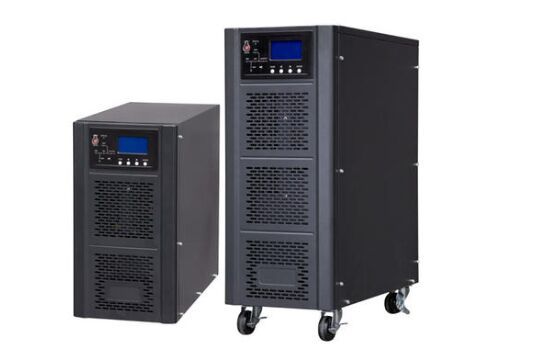Uninterruptible power supplies (UPS) protect IT equipment and other electrical loads from the problems that plague our power supply. It prevents hardware damage usually caused by power surges and spikes, prevents data loss and damage, and provides availability for networks and other applications while preventing downtime. In some cases, UPS can provide enough battery runtime to cope with short-term power outages. In other cases, they can provide hours of running time to cope with longer power outages.
Understanding the existing power infrastructure is a vital first step in the process of choosing UPS qualification and sales. Although you might focus on large three-phase power systems, most IT managers deal primarily with single-phase equipment at the rack level(three-phase voltage regulator). Many existing computer rooms and small and medium data centers have single-phase loads at the rack level. Top-down design is increasingly moving the three-phase power supply to the utilization point to increase efficiency and reduce costs, which creates huge opportunities for three-phase solutions in new construction.

Considering the installation environment, it is necessary to understand how to deploy the expected UPS. Since most environments support several different solutions, you may need to evaluate these options.
To determine the power load, the VA or watt rating of your power load is one of the most important factors in determining the correct UPS. After determining the power environment (if the UPS requires single-phase or three-phase), the size of the UPS will further narrow the selection range. Especially in a single-phase deployment, it is usually meant to choose a UPS that does not exceed current power requirements but provides longer runtime and allows future growth.
To determine availability requirements, you need to determine the true runtime requirements. During a power outage, you need enough battery runtime to shut down the system normally or switch to a backup generator. Generally, the number of runtimes required can significantly affect the cost of the solution.
To determine the scalability requirements, it is always important to consider your future expansion needs when evaluating UPS solutions(line interactive UPS vs online UPS). For budget-conscious or budget-constrained customers, UPS with inherent scalability often proves to be the best value, allowing you to increase capacity without purchasing additional hardware. According to your needs, you can use a larger centralized,
When considering power distribution, it is important to consider how to supply power to critical equipment. In some cases, you can simply plug the load directly into the UPS. In other cases, you may need a large PDU to distribute power. You can also integrate rack-based power distribution panels or ePDU units into your design.
Study the manageability software. When the UPS protects the connected load during a power outage, power management software is required to ensure that all work in progress is saved, and if the power outage exceeds the battery runtime of the UPS, sensitive electronic equipment can be shut down normally. If there is no software, the UPS will run until the battery is exhausted, and then reduce the load. Most power management software is provided with the UPS, and can usually be downloaded online for free.
Consider monitoring functions. In addition to the basic functions of UPS software, you should also consider implementing monitoring and manageability functions. These features include power event notifications, including emails to pre-designated recipients, pop-up alerts and text messages; recording power events; advanced features in the virtual environment, including integration into VMware's ESXi and vSphere and Microsoft's Hyper- V; Dedicated battery monitoring and advanced service notification; and remote monitoring by the service personnel of the UPS manufacturer.
Access to internal technical capabilities. Although you may cherish the ability to maintain your own equipment, most IT and facility management professionals hope to obtain comprehensive factory support through on-site service or advanced UPS exchange agreements, so as to save worry. To make an informed decision about service support, you must accurately assess your technical and service capabilities. You should also review various UPS product designs to evaluate how easy it is to replace batteries and power modules.
Give priority to maximizing your budget. Although the latest UPS performance can meet your needs well, budget constraints may force you to make trade-off decisions. Be prepared to prioritize your needs for redundancy, scalability, efficiency, software management, modularity, and maintainability.
The UPS works normally but the load equipment is abnormal. Possible reasons:
The UPS output zero-ground voltage is too high; the UPS ground wire and the load equipment ground wire are not connected at the same point; the load equipment is subject to abnormal interference.
Correctly solve the problem of uninterruptible power supply working normally but abnormal load equipment:
Check the UPS grounding. If necessary, connect a 1-3KQ resistor between the zero ground of the UPS output terminal; connect the UPS ground and load ground to the same point; restart the load equipment.
The online interactive UPS is both a charger and an inverter, so it is called a double-conversion type. It refers to charging the battery when the mains power is input, that is, the inverter of the power supply is in the reverse working state. When the mains power fluctuates, it is immediately put into use When it comes to inverter work, the battery pack power is converted to AC output.
Therefore, the online interactive UPS power supply also has a certain conversion time. Compared with the backup type, the online interactive type has stronger protection ability and the inverter output voltage waveform is better. It is a sine wave. This kind of UPS power supply has software function, which can be convenient for remote control and intelligent management, and is suitable for servers and minicomputers.